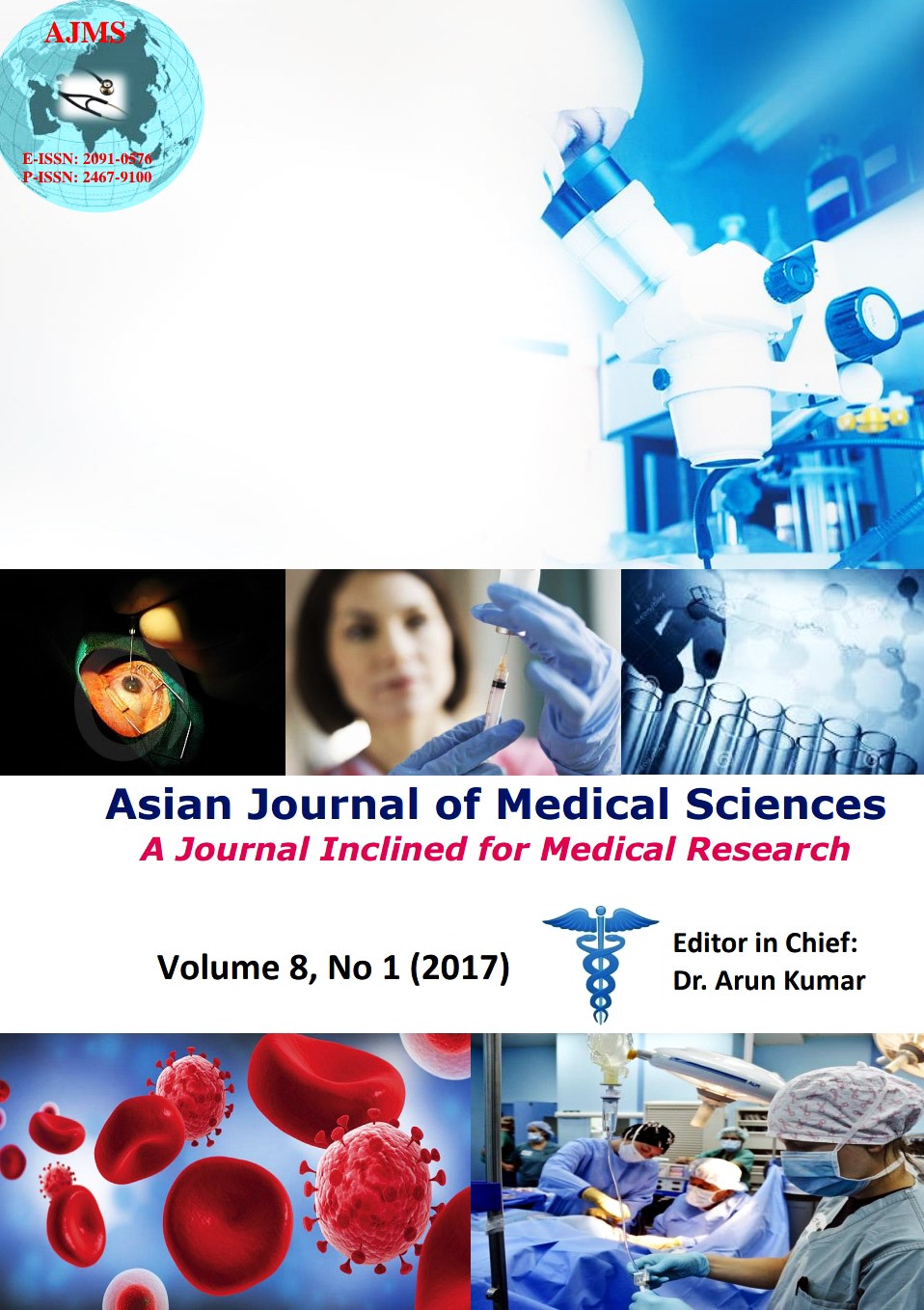A study on the correlation of matrix metalloproteinase MMP1 in COPD and smoking in the North Indian population
Keywords:
COPD, MMP1, SNP, FEV1/FVC % (post-bronchodilator), Pack yearsAbstract
Background: Chronic Obstructive Pulmonary Disease (COPD) is characterized by airway obstruction and destruction of lung tissue, the disease for which at present there is no cure, although the treatment can slow worsening. Nearly 90% of COPD is caused by long term cigarette smoking; however, only 25% of chronic tobacco smokers develop COPD, the exact
cause of this predisposition of some smokers to acquire COPD is still poorly understood at the molecular level. Lot of studies are available showing the correlation of MMP1 and asthma but not much work has been done on its correlation with COPD especially in North India. The outcome of our study was also expected to discover MMP1 as a new target for treating COPD and its progression in smokers.
Aim and Objectives: The association of COPD and smoking with MMP1 gene product and its SNP in the North Indian population was intended to be studied.
Material and Methods: The proposed study was a case control study. In this study adults aged 30 years and above fulfilling the inclusion criteria (Please see Annexure I) were considered and a total of 180 subjects were taken after determining the sample size. Pulmonary function test (PFT) was performed by Spirometry. Three main groups each consisting of 60 subjects were formed on the basis of smoking history and Spirometry: Ist group: Smokers without co-morbidity with normal PFT, IInd group: Smokers with Spirometry proved COPD and without any other co-morbidity, IIIrd group: Healthy Non-smoker controls. Quantification of metalloproteinase MMP1 in all the groups were performed in the serum with ELISA kits and Single Nucleotide Polymorphism (SNP 1G-1607 2G, ID rs1799750) studies in the gene encoding MMP1 linked to COPD susceptibility in smokers was performed by DNA Sequencing Analysis. The correlation between the SNPs, gene product, smoking and COPD was studied.
Results: MMP1 concentration was seen increased in serum of COPD and smokers when compared to healthy controls. And there is high negative correlation between *FEV1/FVC % (post-bronchodilator) and MMP1 in COPD compared to Smokers and Healthy Controls. However, from the results of present analysis, we could show negative correlation between MMP1 and *FEV1/FVC % in all the 3 groups but the correlation proves to be much more negative in Group II i.e. Smokers with COPD. Statistically Significant Positive Correlation of Pack Years with MMP1 conc., and Statistically Significant Negative Correlation between Pack Years and *FEV1/FVC % was seen.
Conclusion:In conclusion, our present analyses did show significant association between MMP1 and COPD risk in North Indian population. MMP1 levels of COPD patients were significantly increased in smokers and may contribute to or be a marker of the pathophysiology of COPD.
Asian Journal of Medical Sciences Vol.8(1) 2017 5-14
Downloads
Downloads
Additional Files
Published
How to Cite
Issue
Section
License
Authors who publish with this journal agree to the following terms:
- The journal holds copyright and publishes the work under a Creative Commons CC-BY-NC license that permits use, distribution and reprduction in any medium, provided the original work is properly cited and is not used for commercial purposes. The journal should be recognised as the original publisher of this work.
- Authors are able to enter into separate, additional contractual arrangements for the non-exclusive distribution of the journal's published version of the work (e.g., post it to an institutional repository or publish it in a book), with an acknowledgement of its initial publication in this journal.
- Authors are permitted and encouraged to post their work online (e.g., in institutional repositories or on their website) prior to and during the submission process, as it can lead to productive exchanges, as well as earlier and greater citation of published work (See The Effect of Open Access).




